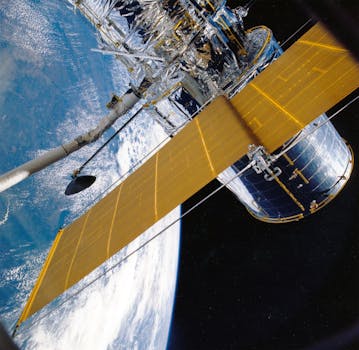
Navigating the Skies: Insights into Recent Satellite Telecommunications Innovations
Satellite Telecommunications
Satellite Telecommunications innovations have been transforming the way we communicate and access information. With the increasing demand for global connectivity, satellite telecommunications have become a vital component of modern communication systems. The latest advancements in satellite technology have enabled faster, more reliable, and more secure communication services, connecting even the most remote areas of the world.
The use of satellite telecommunications has various applications, including navigation, weather forecasting, and remote sensing. Additionally, satellite telecommunications play a critical role in providing communication services during natural disasters and emergencies, when traditional communication infrastructure is damaged or destroyed.
One of the significant recent innovations in satellite telecommunications is the development of high-throughput satellites (HTS). HTS offer faster data speeds and greater bandwidth, enabling the delivery of high-quality video and data services. This has led to an increase in the adoption of satellite-based services, such as broadband internet and video streaming.
Recent Advancements and Innovations
Recent years have seen significant advancements in satellite telecommunications technology. The launch of new satellite constellations, such as OneWeb and Starlink, has increased the availability of satellite-based services, providing global coverage and faster data speeds. These constellations are designed to provide low-latency, high-speed internet services, making them ideal for applications such as online gaming, video streaming, and virtual reality.
Another notable innovation is the development of satellite-based 5G networks. Satellite-based 5G networks have the potential to provide widespread coverage, including in areas where traditional 5G infrastructure is limited. This could enable the deployment of 5G services in rural and remote areas, bridging the digital divide and providing equal access to communication services.
Furthermore, the use of artificial intelligence (AI) and machine learning (ML) in satellite telecommunications is becoming increasingly prevalent. AI and ML can be used to optimize satellite operations, predict maintenance needs, and improve the overall efficiency of satellite systems. This can lead to cost savings, reduced downtime, and improved service quality.
Impact and Future Directions
The recent innovations in satellite telecommunications have significant implications for the industry and society as a whole. The increased availability of satellite-based services has the potential to bridge the digital divide, providing equal access to communication services and opportunities for economic growth.
Additionally, satellite telecommunications play a critical role in supporting the deployment of emerging technologies, such as the Internet of Things (IoT) and autonomous vehicles. The use of satellite-based services can provide the necessary connectivity and navigation capabilities for these technologies, enabling their widespread adoption.
As the satellite telecommunications industry continues to evolve, we can expect to see further innovations and advancements. The development of new satellite constellations, the use of AI and ML, and the deployment of satellite-based 5G networks will continue to transform the industry, providing faster, more reliable, and more secure communication services.



